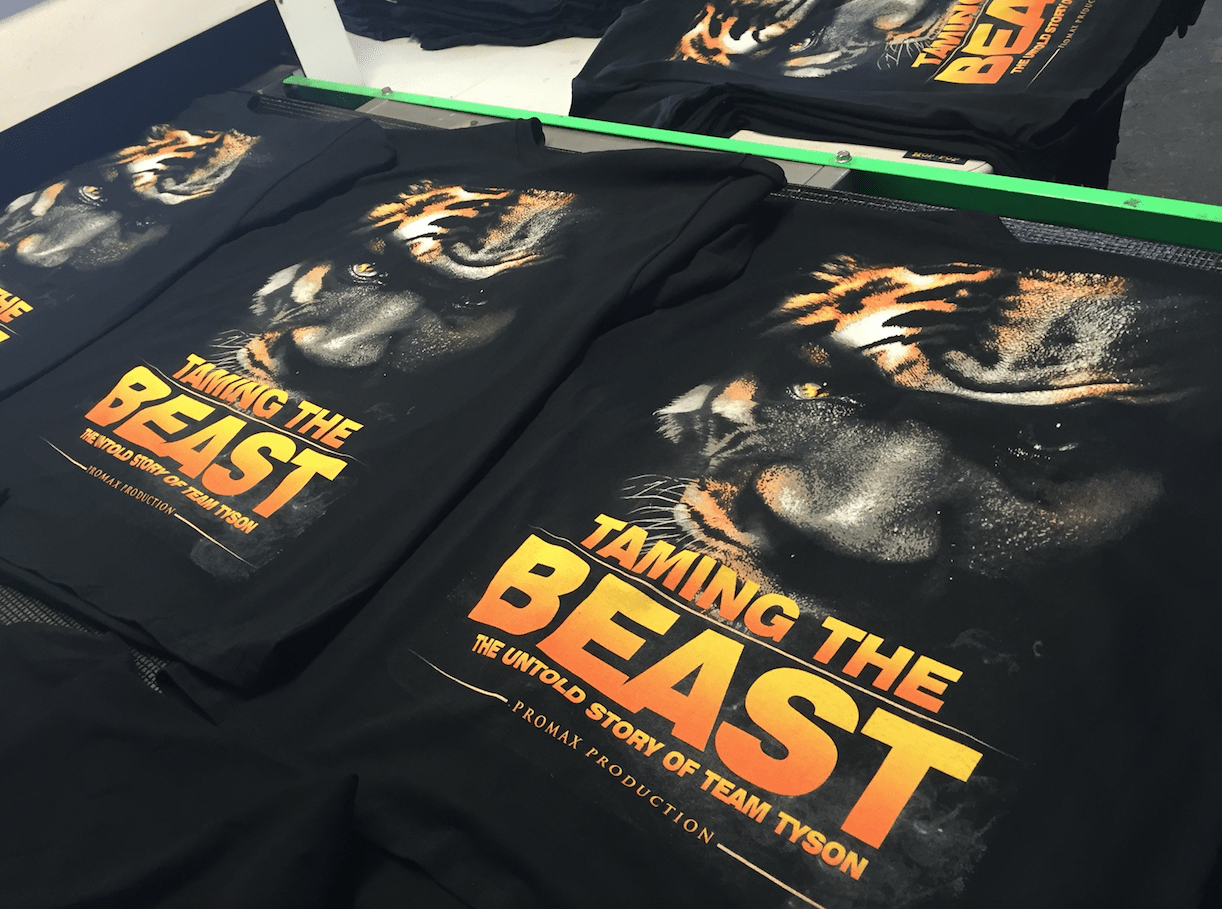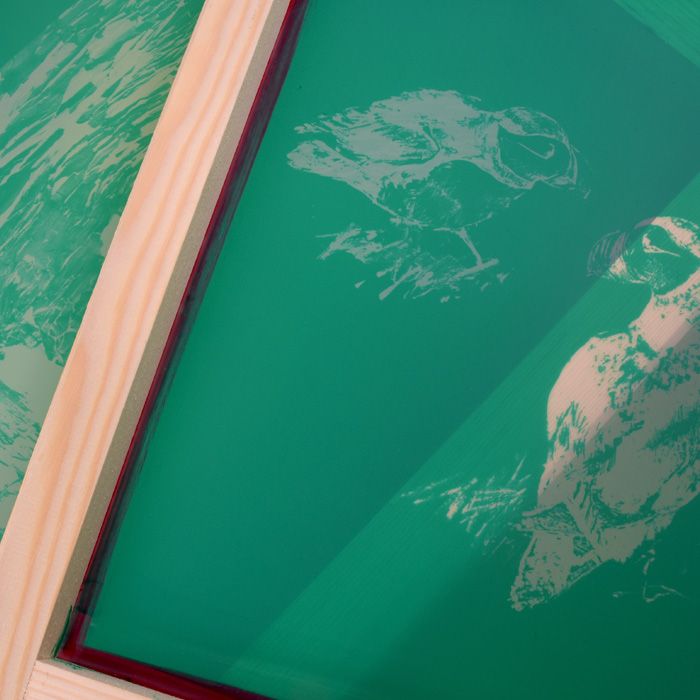Beginner-Friendly Screen Printing Kit for DIY Projects
Beginner-Friendly Screen Printing Kit for DIY Projects
Blog Article
Display Printing Uncovered: Every Little Thing You Required to Find Out About Tee Shirt and Garment Printing Strategies
If you've ever before questioned just how those lively styles wind up on your preferred tee shirts, you remain in the right place. Screen printing is a fascinating technique that incorporates art with strategy, supplying countless possibilities for creative thinking. Understanding the basics, from devices to ink selections, can greatly influence your outcomes. All set to explore the important components that make display publishing an art type? Let's discover the details that can elevate your tasks.
The Basics of Display Printing: Just How It Functions
When you dive into screen printing, you'll uncover it's both a science and an art. At its core, display printing entails producing a stencil, or display, that allows ink to go through only in specific locations (screen printing kit). You start by selecting your style and preparing your display with a light-sensitive emulsion. As soon as you subject this emulsion to light, it sets, leaving your style as an adverse room.
Placement the screen over the fabric, after that use a squeegee to press ink via the screen onto the garment. Each step is crucial, and grasping them will certainly elevate your screen printing skills, changing easy garments into special, meaningful pieces.
Kinds of Display Printing Strategies
When you realize the essentials of screen printing, it's time to discover the different strategies that can elevate your layouts. One popular technique is typical display printing, where ink is pressed via a stenciled display.
An additional option is plastisol printing, understood for its longevity and brilliant colors, making it a favored for lots of brand names. Experiment with halftone printing to create slope results and intricate styles.
Necessary Devices for Screen Printing
To attain spectacular lead to display printing, having the ideal devices is fundamental. You'll require a strong display printing frame, which holds the mesh that moves your style onto the garment. Next, purchase premium mops; these are vital for applying ink evenly throughout the display. You'll also call for a great exposure system to produce your displays, in addition to a washout cubicle for cleaning them after use. A trusted warm source, like a conveyor dryer or warm press, is essential for treating your prints to assure long life. Don't fail to remember an appropriate office, geared up with tables and storage space for your materials. Safety gear, such as masks and handwear covers, will maintain you safe from chemicals and inks. With the right tools, you'll be well on your way to generating professional-quality prints.
Picking the Right Inks and Materials
When picking inks and products for display printing, you require to take right into account the kind of ink that functions finest for your project. Believe about fabric compatibility to ensure your styles look wonderful and last long. Discover environmentally friendly ink options to make your printing procedure more lasting.
Sorts Of Display Inks
Picking the best screen ink is necessary for accomplishing dynamic, durable prints that satisfy your project's needs. There are numerous types of display inks to analyze. Specialized inks, such as glow-in-the-dark or metal, can include distinct results to your designs.

Material Compatibility Considerations
Understanding textile compatibility is essential for accomplishing premium display prints, specifically given that different products react uniquely to various inks. Always examine your inks on example fabric to guarantee they adhere properly and preserve shade integrity. In addition, maintain in mind that textile weight and structure can impact the final end result, so picking the best ink and product combination is vital for your task's success.
Eco-Friendly Ink Options
Eco-friendly inks are coming to be a preferred option for screen printers that desire to minimize their environmental impact while keeping top quality. When selecting inks, think about water-based inks, which are less harmful and less complicated to clean up compared to traditional solvents.
Furthermore, seek inks made from sustainable sources, such as soy or vegetable-based choices. By choosing the ideal inks and products, you'll not only produce stunning layouts however also add to an extra lasting printing process. Make the switch, and your prints will reflect your commitment to the environment!
Preparing Your Layout for Display Printing

File Layout Needs
To assure your design looks dynamic and sharp on material, you'll require to pay close focus to submit layout demands for screen printing. Start with vector data like AI or EPS, as they can be scaled without shedding top quality. If you use raster pictures, go with high-resolution data, such as TIFF or PNG, preferably at 300 DPI. Avoid using JPEGs, as they can shed quality when resized. Additionally, make sure your layout has a transparent history to stop undesirable white edges on your prints. Lastly, keep color modes in mind; CMYK is standard for screen printing, so transform your RGB designs accordingly. By complying with these guidelines, you'll set your artwork up for a successful print.
Shade Separation Strategies
Color separation is an important action in preparing your style for screen printing, and understanding it can considerably boost your print quality. You'll require to break your style into specific shades, as each color requires a separate screen throughout printing. Start by determining all the colors in your layout and produce layers for each one. You can use software like Adobe Photoshop or Illustrator to isolate and different colors efficiently. Be certain to conserve each layer as a different file, generally in a style like TIFF or PSD. This accuracy not just assures exact shade representation but likewise enhances the printing procedure. By taking note of shade separation, you'll attain professional and dynamic lead to your screen-printed garments.
Resolution and Dimension
Achieving the most effective lead to display printing starts with assuring your layout has the ideal resolution and dimension. Preferably, your artwork ought to go to least 300 DPI (dots per inch) for sharp, clear prints. Your last item could look pixelated and less than professional. if you make use of lower resolution.
When it pertains to size, this content think about the dimensions of your print area. Layout your art work to match the last print size, preferably developing it in the actual measurements you'll be printing. By doing this, you'll prevent any unexpected scaling problems.
Constantly examine your style in both vector and raster layouts. Vector graphics can be scaled without losing quality, making them perfect for screen printing. Preparing appropriately will ensure your style looks remarkable on every garment!
Step-by-Step Screen Printing Refine
Screen printing is a dynamic process that permits you to create lively layouts on numerous surface areas. To begin, you'll need a screen, solution, and your picked ink. Prepare your screen by cleaning it extensively. Next off, use the solution evenly and let it completely dry in a dark area. As soon as dry, expose your screen to light with your design put on it, which will harden the emulsion where the light hits, creating a pattern - screen printing kit.
After cleaning out the unexposed emulsion, your screen is prepared. Establish it up on your printing surface and straighten your garment under it. Pour ink onto the display and make use of a squeegee to press the ink with the stencil onto the fabric. Lift the display thoroughly and let the print completely dry. Heal the ink making use of heat to assure toughness. That's it! You have actually effectively screen published your layout.
Tips for Successful Screen Printing Projects
While you're diving into your display printing tasks, keep in mind that preparation is crucial to success. Start by gathering all your materials-- inks, squeegees, garments, and screens. A clean workspace assists prevent unwanted errors, so neat up before you begin.
Following, verify your artwork is high-resolution and properly sized for your garment. Evaluate your screen for proper direct exposure and tidy it thoroughly to stay clear of smudges. When mixing your inks, adhere to the supplier's standards to attain the ideal consistency.
Throughout printing, apply even stress with your squeegee for constant results. Do not rush; take your time to verify each print satisfies your requirements. After printing, let your garments pop over to these guys dry totally prior to taking care of or packaging them.
Last but not least, constantly maintain a sample of your help future referral. This method, you can evaluate your progress and enhance your strategies gradually. Happy printing!

Frequently Asked Concerns
For how long Does It Require To Establish up a Display Printing Task?
Establishing a screen printing job typically takes around thirty minutes to an hour. You'll prepare the screens, mix inks, and readjust journalism. The moment differs based upon intricacy and experience, so stay organized!
Can I Print on Various Fabric Enters Using the Exact Same Technique?
Yes, you can print on different material kinds using the exact same strategy, however you'll need to change your inks and setups. Some fabrics soak up ink in different ways, so trying out assurances the very best results for each and every product.
What Prevail Blunders to Prevent in Display Printing?
When screen printing, prevent typical mistakes like using the wrong ink, disregarding appropriate direct exposure times, or skipping pre-press checks. Constantly test your arrangement and keep clean displays to assure high quality outcomes each time.
How Can I Correctly Tidy and Keep My Screen Printing Devices?
To appropriately tidy and preserve your display printing devices, you need to frequently clean displays with ideal solvents, inspect squeegees for wear, and assure all tools are kept dry and dust-free. Uniformity improves and protects against pricey repairs efficiency.
Is Display Printing Eco-friendly Contrasted to Various Other Techniques?
Screen printing can be more ecologically pleasant than other approaches, particularly if you make use of eco-conscious products and water-based inks. By picking sustainable products and practices, you minimize waste and lessen your impact on the planet.
Display Printing Uncovered: Everything You Need to Know Concerning Tee and Garment Printing Strategies
At its core, screen printing involves producing a stencil, or display, that permits ink to pass with only in certain areas. Setting the display over the material, after that make use of a squeegee to you could look here push ink with the display onto the garment. One preferred approach is typical display printing, where ink is pushed with a stenciled display.When selecting inks and products for screen printing, you need to take right into account the type of ink that works best for your job.
Report this page